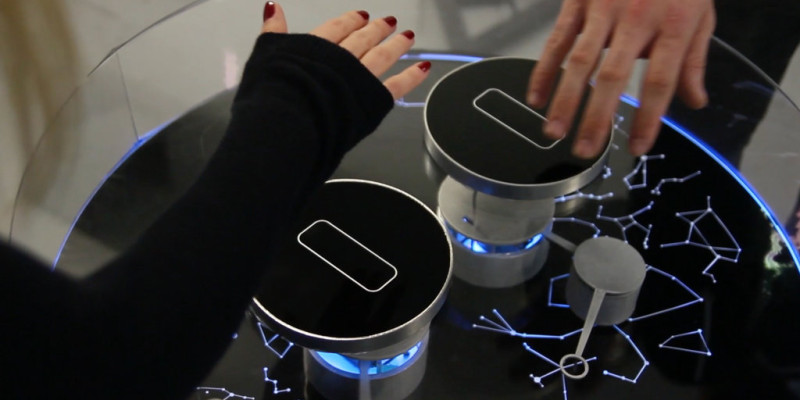I'm a big fan of space. Everything about it is so majestic, and one of the most intriguing parts of space to me is that many celestial bodies in space make a sound, but that sound will never reach earth due to the vacuum of space. Wondering about the sounds of stars, pulsars and everything else actually inspired me to make an interactive sonic representation of space for a project during university.
Italian artist Francesco Fabris has taken the idea of sonically representing space to the next level, and created Stellar. The interactive project uses LeapMotion sensors to detect the position of the user's hands, and move two arms around a cylinder. Underneath the arms is a representation of constellations seen from the northern hemisphere. When the end of an arm aligns with a star, a sine wave is emitted. The sound of the sine wave is dependant on important factors about the star.

As we don't know for sure what the stars sound like, the sound created is a representation based on the temperature, brightness, and distance. The star's brightness controls the oscillator's amplitude, the distance from earth controls the duration, and the temperature controls the pitch. An underlying white noise oscillator has a low pass filter applied, where the cutoff frequency rises depicts the size of the constellation.
The project is powered by 2 Arduino Unos, four servo motors, 2 LeapMotions, an LED array and uses Max 7 for the audio processing. The servos are controlled via one of the Arduino boards, and the other controls the LED array. A pair of Mac Minis (connected over a network) are used to interpret the LeapMotions and output the sound.
Stellar is a beautiful sounding representation of the night sky, and it visually looks stunning. You can read more about it on Francesco's website.
